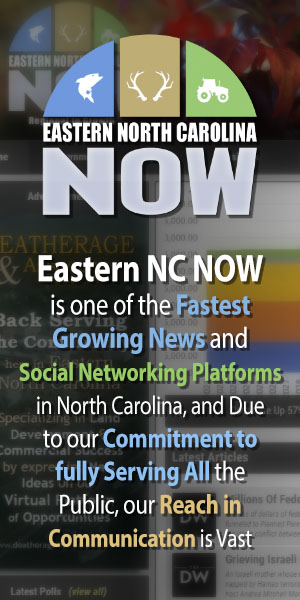Publisher's note: The author of this post is Sara Burrows, who is a contributor for the Carolina Journal, John Hood Publisher.
Critics call rail hub a taxpayer-subsidized portal for a few elites
RALEIGH - Raleigh officials got most of the money they wanted for the estimated $73 million Union Station upgrade. In late September, the city
secured an extra $15 million in federal funds, bringing to $66.25 million the amount of federal, state, and local funding committed to the proposed transit hub. But the project faces critics who note that, if the proposal really could expand development in the way its backers imagined, Union Station would have generated more money from private developers and less from taxpayers.
Backers of the project envision a classic train station in the style of New York City's Grand Central Station - complete with a first-class passenger lounge, a locker room, gym, and quiet room for employees, restaurant and retail spaces, a rooftop terrace, and solar panels - in the middle of the city's mostly abandoned Warehouse district.
They hope the new Union Station will become a "destination hub" - attracting nearby development, creating local jobs, and renewing a section of downtown that slowly vanished as the state's traditional manufacturing industry withered. They also see the station as a place connecting train riders with buses, light rail, and local streetcars.
But critics note that even a state-of-the-art facility would be unlikely to entice investments from developers and new business owners. They say the station, along with the entire Southeast High Speed Rail Corridor with which it will connect, stands to serve a small number of elite riders who will depend on big tax subsidies for their rides.
"Gateway to the South"
Mitchell Silver, who heads of the Raleigh City Planning Department, has been a key player in pushing Union Station. A critical part of his plan to shape Raleigh into what he has called "one of the world's attractive cities" is building a bigger, more comprehensive public transportation network.
Silver has said Union Station - built on the site of a retrofitted steel fabrication warehouse - could become the "Gateway to the South" for passengers traveling from Boston and Washington, D.C., to Charlotte, Atlanta, and beyond.
He also hopes it will become a "destination" in and of itself, with the redevelopment of the old Dillon Supply building into a train station sparking life into the vacant industrial buildings around it.
A News & Observer editorial illuminated this vision: "Passengers - and visitors, for this will be a hang-out spot - will enter the site through a civic plaza covered by a large 'urban canopy' (architects' description), and they'll wait for their trains in a Grand Central-style station," the editorial said.
The editorial also noted that passengers arriving at Raleigh's current Amtrak station are "taken aback" by its smallness and "dismayed if not depressed by the antiquated, run-down facility."
In order to attract development, Union Station architect Steve Schuster said the "landmark" building "has to be authentic, has to be memorable, and has to be unique."
But it also has to be paid for, and finding funding has been difficult.
Initially, in June 2011, planners said the vacant building chosen for Union Station could be "up-fitted" for $20 million. Six months later, cost projections rose to $35 million. By March 2012, cost estimates soared to $75 million, after site planners factored in track, platform, and signal improvements and a proposed extension of West Street, allowing pedestrians, cyclists, and cars to travel on a roadway beneath the tracks.
Of the $66.25 million committed to Union Station, the U.S. Department of Transportation is providing $51.5 million, the NCDOT $9 million, and the city $5.75 million.
Expensive rides for elites
Conservative transportation experts say budget overruns are typical of these types of projects and that taxpayers will be lucky if the Union Station project stays under $100 million.
Randal O'Toole, a transportation and urban growth expert at the libertarian Cato Institute, said $73 million for a "train hub" sounded "absurd to him."
Approximately 224 people take round-trips in and out of Raleigh each day, he said, and converting Amtrak's lines to "high-speed" rail - operating at peak speeds of 110 miles per hour - won't be enough to attract large numbers of riders.
"[I]t is an expensive ride for an elite group of riders," O'Toole said.
David Hartgen, a retired professor of transportation studies at UNC-Charlotte and a senior fellow at the Reason Foundation, said the economic impact of Union Station would be "zero," aside from some temporary construction jobs.
He said there is no evidence transit-oriented development stimulates overall economic development but merely shifts it to the areas that get the most subsidies.
He added that it doesn't make sense for rail advocates to demand huge investments in public infrastructure while private transportation companies like Megabus are cutting routes.
The difference in thinking may explain the difference in ticket prices, even with Amtrak being heavily subsidized by the state and federal government.
"Amtrak has three trains a day between Raleigh and Charlotte with fares starting at $34. Megabus doesn't serve Raleigh - probably because of Amtrak competition - but has three buses a day from Durham to Charlotte and fares start at $26," O'Toole said.
Union Station supporters connect the decision of software company Citrix Systems to locate in the warehouse district with the planned train station, and hope more companies follow suit.
In an early September announcement, U.S. Sen. Kay Hagan, D-N.C., said a $10 million federal Transportation Investment Generating Economic Recovery grant for the project would help Union Station revitalize downtown Raleigh's economy.
O'Toole countered that a better strategy for the Warehouse District would be to follow the example of Anaheim's "Platinum Triangle" in California.
"Anaheim did not offer any subsidies to redevelop this old warehouse district," O'Toole said. "Instead, it deregulated the area, allowing any development that landowners wanted to do. Unfettered by onerous permitting processes, developers soon invested several billion dollars in the district."






















